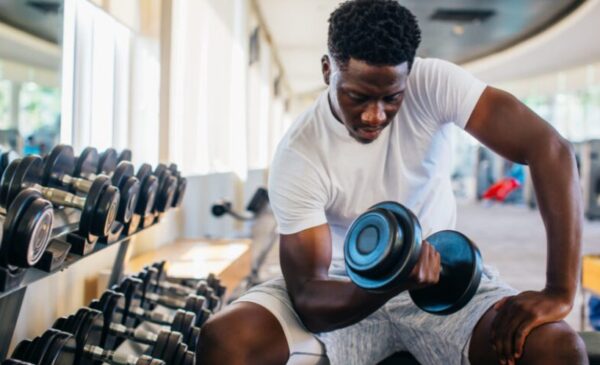Lifestyle
8 exercises everyone should do regularly to prevent back pain

Back pain is no more associated with age, it has reversed its onset and is commonly seen among youngsters these days!
While many factors contribute to back pain, including poor posture, sedentary habits, and muscle imbalances, a common and the most effective way to prevent back pain is through regular exercise.
The objective behind alleviating back pain is by strengthening the muscles that support the spine, improving flexibility, and maintaining a healthy posture can significantly reduce the risk of developing back pain.
How exercise helps in reducing back pain
Many back problems are caused by poor posture, especially from sitting for long periods. Exercises that enhance body awareness and spinal alignment can help maintain better posture.
1. Pelvic tilts
Pelvic tilts are gentle exercises that help stretch and strengthen the lower back and abdominal muscles. This simple movement helps strengthen the core and lower back muscles, making it easier to maintain proper spinal alignment throughout the day.
Lie on your back with your knees bent and feet flat on the floor.
Tighten your abdominal muscles and press your lower back into the floor.
Hold the position for a few seconds, then relax.
Repeat 10–15 times.
2. Cat cow stretch
The Cat-Cow stretch is a popular yoga pose that promotes flexibility and helps relieve tension in the spine. This stretch increases flexibility in the spine, helping to release tightness and prevent stiffness.
Start on your hands and knees, with your wrists directly under your shoulders and your knees under your hips.
Inhale as you arch your back, dropping your belly toward the floor and lifting your head and tailbone (this is the Cow position).
Exhale as you round your back, pulling your belly button toward your spine and tucking your chin toward your chest (this is the Cat position).
Repeat 10–15 times.
3. Bridges
Bridge exercises strengthen the gluteal muscles and lower back, which are crucial for supporting the spine. Bridges are particularly effective at strengthening the glutes and hamstrings, which help prevent lower back pain by stabilizing the pelvis and spine.
Lie on your back with your knees bent and feet flat on the floor, hip-width apart.
Tighten your core and lift your hips toward the ceiling, creating a straight line from your shoulders to your knees.
Hold the position for a few seconds, then slowly lower your hips back down.
Repeat 10–15 times.
4. Child’s pose
Child’s Pose is another yoga stretch that gently lengthens the lower back and relieves tension. This pose helps elongate the spine and release tension in the lower back and shoulders, providing a gentle stretch that improves flexibility.
Kneel on the floor and sit back on your heels.
Lower your chest toward the floor, stretching your arms out in front of you.
Rest your forehead on the ground and breathe deeply.
Hold the position for 30–60 seconds.
5. Bird dog exercise
The Bird Dog is an excellent exercise for improving stability, balance, and core strength. The Bird Dog works the core, lower back, and hips, all of which contribute to spinal stability.
Start on your hands and knees, with your wrists under your shoulders and knees under your hips.
Extend your right arm forward and your left leg back, keeping both parallel to the ground.
Hold the position for a few seconds, then return to the starting position.
Repeat with the opposite arm and leg.
Perform 10–12 repetitions on each side.
6. Plank
The Plank is a fundamental core-strengthening exercise that engages the entire body, especially the muscles that support the spine. The Plank builds strength in the abdominals, lower back, and shoulders, all of which are crucial for maintaining spinal stability and preventing pain.
Start in a push-up position, with your forearms on the ground and your body in a straight line from head to toe.
Engage your core and hold the position without letting your hips sag.
Hold the plank for 20–30 seconds (or longer, if possible).
Repeat 2–3 times.
7. Hip flexor stretch
Tight hip flexors can pull on the lower back, leading to pain. Stretching these muscles can help relieve lower back discomfort. This stretch helps release tension in the hips, which can reduce strain on the lower back.
Kneel on one knee, with the other foot in front, forming a 90-degree angle at both knees.
Shift your weight forward slightly, feeling a stretch in the hip of the leg that is kneeling.
Hold the stretch for 20–30 seconds, then switch legs.
Repeat 2–3 times on each side.
8. Hamstring stretch
Tight hamstrings can also contribute to lower back pain by pulling on the pelvis. Regular hamstring stretches can prevent this tension.
Sit on the floor with both legs extended in front of you.Slowly reach forward toward your toes, keeping your back straight.Hold the stretch for 20–30 seconds.Repeat 2–3 times.
A flexible hamstring can alleviate the pressure that tight muscles place on the lower back, reducing the likelihood of pain.
What else can you do to strengthen your back muscles
Here are some general tips:
Avoid sitting for long periods. Get up and move around every 30 minutes to keep your spine flexible and muscles active.
When lifting heavy objects, use your legs to avoid straining your back. Bend your knees and keep the object close to your body.
Whether sitting or standing, keep your back straight and shoulders relaxed. Avoid slouching, which puts unnecessary pressure on your spine.
Ensure your mattress and pillow provide proper support for your spine. Sleeping on your back or side with a pillow between your knees can also help reduce strain on the back.










